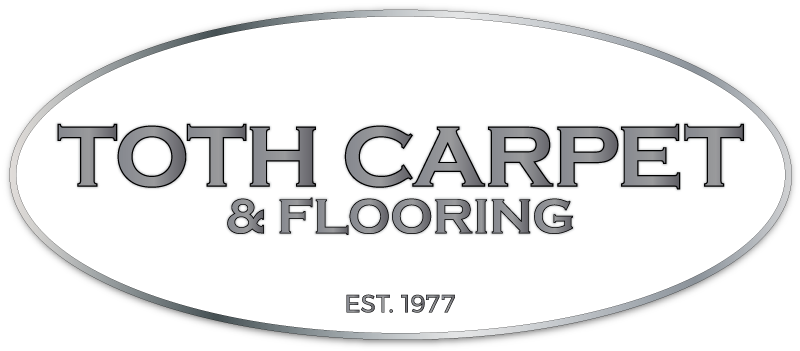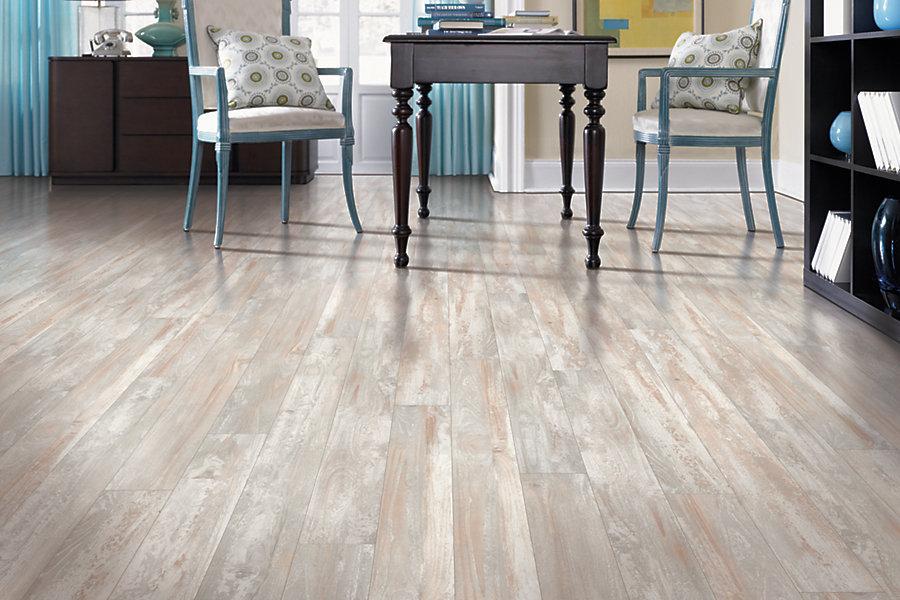What is LVT?
LVT, known as luxury vinyl tile, is a relatively new option for hard surface flooring. While most are “wood look” floors there are many “stone” or tile looks as well. LVT allows one to add a hard surface without the difficult installation and maintenance often associated with wood or other traditional hard surface floors.
Composition of LVT
LVT floors are generically constructed in several layers. From top to bottom these are:
- “Wear” layer
- Print film or Design layer
- Vinyl Core
- Backing or Foundation layer
The two layers that most interest an end user are typically the “Wear Layer” and the “Print Film” or Design layer.
The “Wear Layer” is what is typically of most concern to the end user. Typically this layer is measured in Mils. Common thicknesses are 8 mil, 12 mil, 20 mil, 22 mil etc. The thicker the mil the heavier the wear layer and typically the better the warranty. While an 8 mil product may suite your needs residentially, you should consider 12mil or above for commercial sites depending on the application.
The “Print Film” or Design layer will be the actual color or shade of the product. These are more often “wood looks” but many stone and tile looks are available as well.
Types of LVT Floors
LVT floors come in 2 basic “types” Direct glue down and floating. Each has their pros and cons.
Similar to a laminate floor a floating LVT or “Clic” snaps together, with a tongue and groove system, and floats on top of many existing sub-floors. In many situations this allows one to not have the expense of installing a new sub-floor. A “Clic” floor is a bit more expensive than an even quality glue down floor however if a new sub-floor is not needed it may make the most economic sense.
A direct glue down floor glues directly to the sub-floor with a ” releasable” adhesive. This would be most similar to a VCT (vinyl composition tile) installation. The advantage here is a lesser cost material (relative to a clic), and ease of repair. If a tile should become damaged in the middle of the room you simply can heat it up remove it and replace with a new tile. (you should always have some amount of attic stock from your original installation). The potential drawback of such a floor is that in most circumstances they will require the installation of a new sub-floor. There are cases in which an existing floor can be patched and gone over but the majority of situations will require a new sub-floor. An in home site visit can easily determine which product would be to each individuals advantage.
Advantages over hardwood or laminate flooring
There are several advantages to and LVT floor over a traditional hardwood floor or a laminate floor. First and foremost is water and moisture. Being that hardwood is in fact wood any moisture can cause serious damage. A laminate floor is particle board at its core so suffers similar failures when it comes in contact with moisture. Oftentimes these hard surfaces are used in potentially “wet” areas such as kitchens, bathrooms and basements. Minimal expansion space is needed around the perimeter allowing a typical baseboard or cove base to cover reducing the need for quarter round or shoe moldings.
Maintenance on LVT products is simple and easy.
- Clean up all spills quickly with a damp rag or cloth
- Regularly vacuum floor (without a beater bar) to remove dirt and grit
- Damp mop as needed with warm water and vinyl floor cleaner (avoid soaps and abrasive cleaners)
- Protect floor from furniture by using casters, felt bottoms or other protective devices on furniture.
- No need for large expansion areas around perimeter.

